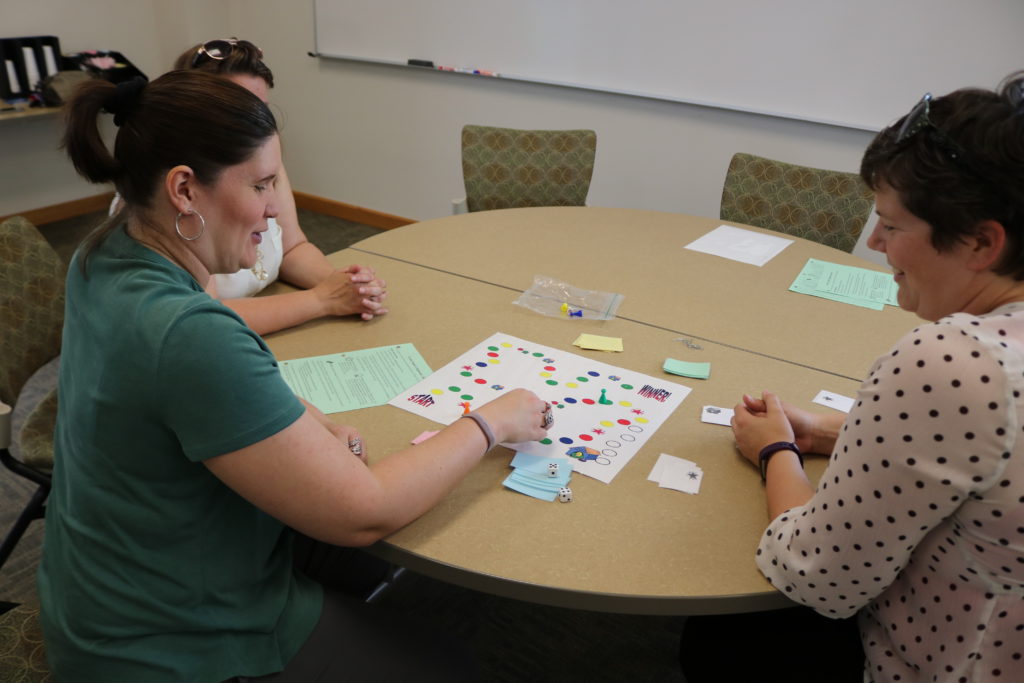Criteria that Influence the “Training Method” One Selects S19
Training Outcomes – Will the training method selected effectively lead the learner toward accomplishing the training outcome(s)?
- Let’s consider the training method of ‘drawing’:
- Drawing a diagram of a teacher’s room arrangement during a workshop on “Designing an Engaging Learning Environment” is appropriate.
- Drawing a representation of a teacher’s one-on-one interactions with children during a small group time for a workshop on “Adult-Child Interactions” is inappropriate. It is too difficult. A brief narrative would be a better option in this situation.
- Let’s consider the training method of ‘debate’:
- Debating the topic of ‘keeping all art area materials accessible for children’ is appropriate and is not a “hot/volatile” topic.
- Debating the topic of ‘using timeout with toddlers’ is inappropriate as this topic is too personal, too volatile and thus, counter-productive.
The Learners – Will your training method work with your group size and the experience level of your participants?
- Brainstorming (p. 22) is effective with large groups because so many ideas are generated in a very short period.
- Fishbowl (p. 23) is appropriate for groups (15+) as it requires an inner discussion group and an outer observation/response group.
- Jigsaws (p. 24) are effective for small groups, as leading a discussion within that same small group is less intimidating and can boost one’s confidence.
- Debating a topic (p.23) with Level 1 early childhood teachers may be more difficult due to their lack of overall experiences in the classroom setting.
Practical Requirements – Is the ‘training method’ feasible given the following?
- Training Room environment:
- Size of the room vs. space needed
- Usable wall space
- Break-out space available
- Time involved:
- Time involved to prepare materials for activity
- Once the materials are made, are they re-usable?
- Duration of activity (# of people impact the timing of activity)
- Materials needed:
- Kind of materials
- Materials easily transported
- Amount of materials needed to accomplish task
- Cost involved:
- Budget limitations/practicalities
- Practical: cuteness vs. concrete content connection = cost of not connecting activity to content

Advantages/Cautions – Consider the advantages and cautions of each training method you choose to implement.
- No matter how clever or unique a ‘training method’ is or how well you like it, if you can’t make a tight connection to your content using it you should consider another method.
- The size and experience level of your group and the practical requirements of space, materials, time and cost must all be weighted in terms of the advantage or cautions to consider of using a given training method.
- Trying out new ‘training methods’ is an advantage in terms of something new, interesting or novel for trainer and audience.
- As the facilitator, if you have not fully worked through and prepared for a new/unfamiliar ‘training method’ that would clearly be a caution to consider. Do not be nervous to try out new methods though. Practice in advance with colleagues or friends to see how the activity will flow.
- The trainer’s facilitation skill, experience and confidence are all advantages to the successful implementation of a training method.
[ms_panel title=”Exploring Training Methods” title_color=”#1a72bf” border_color=”#1a72bf ” title_background_color=”#f5f5f5″ border_radius=”0″ class=”” id=””]Please refer to the ?Handout FET: Training Design pages (22-26) to explore a wide variety of training method options. Highlight or star at least five that you would like to try in an upcoming training.[/ms_panel]
At the upcoming face-to-face day, the Training Coaches will model and debrief a variety of Training Methods. There are endless possibilities to try. You can decide for yourself which ones you prefer and plan to build into your training plans.
